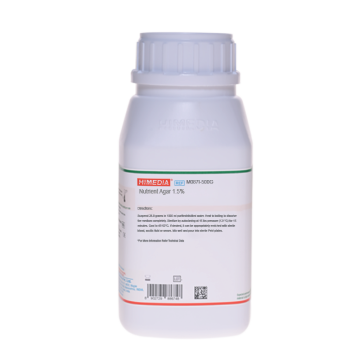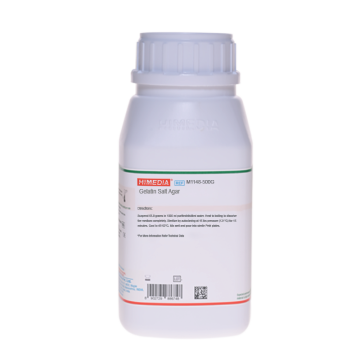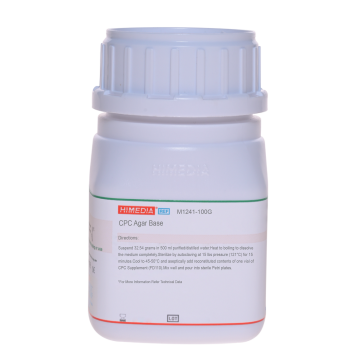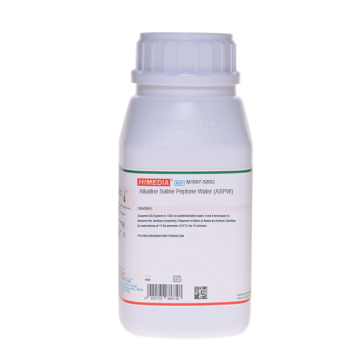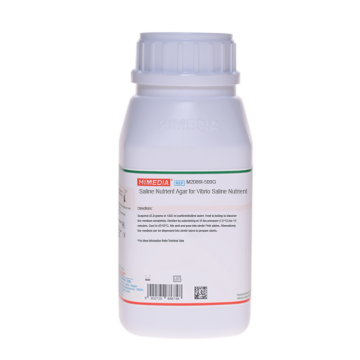 Your enquiry has been submitted
Your enquiry has been submitted
Proteose Agar
Proteose Agar is used for the cultivation of Vibrio species from foods in accordance with APHA.
Composition
| Ingredients | Gms / Litre |
|---|---|
| Proteose peptone | 15.000 |
| Yeast extract | 7.500 |
| Casein acid hydrolysate | 5.000 |
| Starch, soluble | 1.000 |
| Dipotassium hydrogen phosphate | 5.000 |
| Ammonium sulphate | 1.500 |
| Agar | 15.000 |
Final pH (at 25°C): 9.0±0.2
Formula adjusted, standardized to suit performance parameters
Directions
Suspend 50 grams in 1000 ml distilled water. Heat to boiling to dissolve the medium completely. Dispense in 10 ml amounts into test tubes of 16 x 150 mm size. Sterilize by autoclaving at 15 lbs pressure (121°C) for 15 minutes. Incline while cooling to obtain a long slant.
Principle And Interpretation
Vibrios are fairly easy to isolate from both clinical and environmental materials, though some species may require growth factors and/or vitamins. Vibrio parahaemolyticus is the leading cause of bacterial diarrhoea associated with the consumption of contaminated food products. Media can be made selective for Vibrios by addition of appropriate selective agents (1). High concentrations of NaCl and alkaline pH have also been used to select certain Vibrio species, based on the ability of most Vibrios to grow at pH values above 8.0 and at 3% or higher concentrations of NaCl.Proteose Agar is used for cultivating Vibrio species from foods as per APHA (2). This medium does not contain any inhibitor or indicator. However it has a relatively high (alkaline) pH, which suppresses the growth of most of the organisms that are non-alkalophilic or alkali non-tolerant. Proteose Agar medium is nutritious due to the incorporation of nitrogenous compounds such as proteose peptone, yeast extract and casein acid hydrolysate. Dipotassium phosphate and ammonium sulphate provide ions and also buffer the medium. Starch is a carbohydrate source and can also neutralize the toxic fatty acids present in the agar medium if any.
Quality Control
Appearance: Cream to yellow homogeneous free flowing powder
Gelling: Firm, comparable with 1.5% Agar gel
Colour and Clarity: Yellow coloured Clear to slightly opalescent gel forms in tubes as butts
Reaction: Reaction of 5.0% w/v aqueous solution at 25°C. pH: 9.0±0.2
pH: 8.80-9.20
Cultural Response
M1176: Cultural characteristics observed after an incubation at 35-37°C for 18-24 hours.
| Organism | Inoculum (CFU) | Growth |
|---|---|---|
| Vibrio cholerae ATCC 15748 | 50-100 | luxuriant |
| Vibrio parahaemolyticus ATCC 17802 | 50-100 | luxuriant |
Storage and Shelf Life
Store below 30°C in tightly closed container and the prepared medium at 2 - 8°C. Use before expiry date on the label.
Reference
- Collee J.G., Duguid J.P., Marmion B.P., Simmons A., (Eds.), Mackie and McCartney, Practical Medical Microbiology, 1989, 13th Edition, Churchill Livingstone.
- Downes F.P. and Ito K., (Eds.), 2001, Compendium of Methods for the Microbiological Examination of Foods, 4th Ed., APHA, Washington, D.C.
| Product Name | Proteose Agar |
|---|---|
| SKU | M1176 |
| Product Type | Regular |
| Physical Form | Powder |
| Origin | Animal |
| Packaging type | HDPE |
| References | 1. Collee J.G., Duguid J.P., Marmion B.P., Simmons A., (Eds.), Mackie and McCartney, Practical Medical Microbiology,1989, 13th Edition, Churchill Livingstone. |
| Customized Product Available | No |






